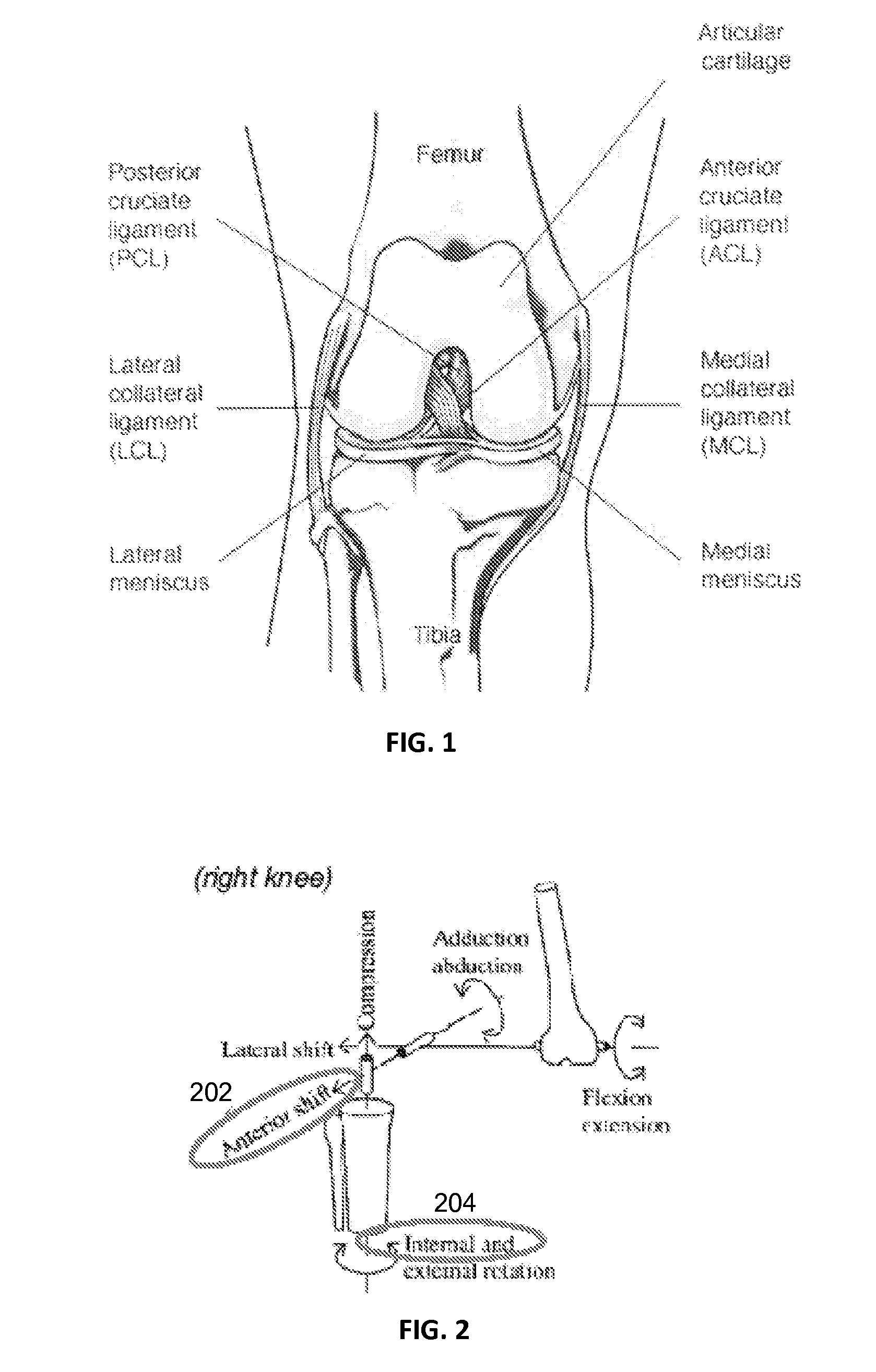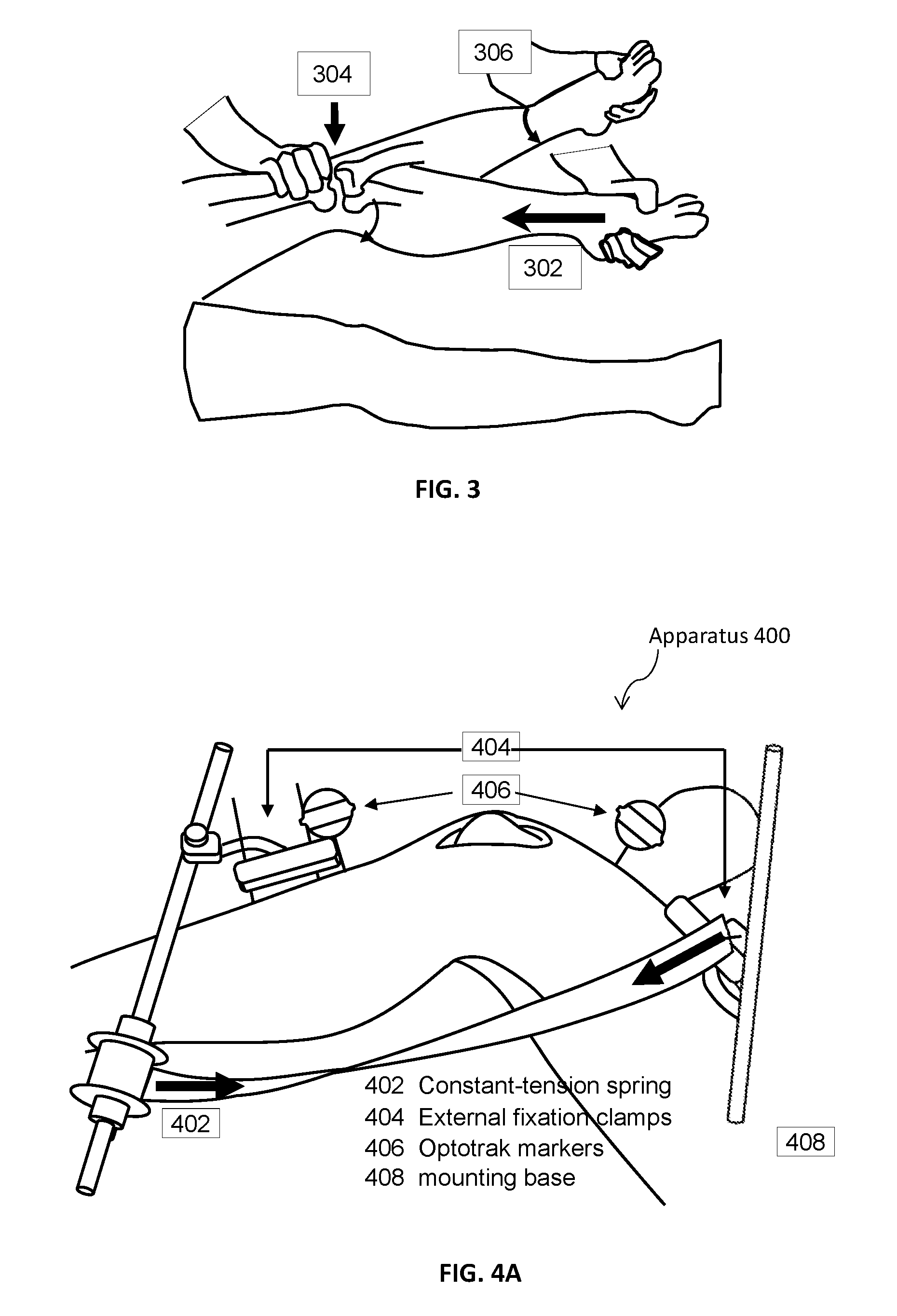Mechanical pivot shift measurement to evaluate joints
a technology of pivot shift and measurement of rotational knee, which is applied in the field of evaluation of joints, can solve the problems of degenerative arthritis, medial meniscus tears and degenerative arthritis, and current reconstruction techniques that are not adequate in restoring rotational knee kinematics to their native state, and achieve the effect of better understanding joint biomechanics and more sensitive detection of deficiencies in rotational knee stability
- Summary
- Abstract
- Description
- Claims
- Application Information
AI Technical Summary
Benefits of technology
Problems solved by technology
Method used
Image
Examples
experimental examples
III. Experimental Examples
[0046]A. Preliminary Studies.
[0047]1. Manual Pivot Shift Test Versus Mechanical Pivot Shift Apparatus.
[0048]The mechanical pivot shift apparatus was used to reproduce a positive pivot shift in an ACL-deficient cadaver knee. The apparatus applied a standardized combination of multiplanar forces and moments to the knee utilizing a constant-tension spring, as illustrated in FIG. 4 to induce a consistent tibial subluxation / reduction event during knee flexion. The mechanical pivot shift apparatus was used to compare the 3D rotational and translational kinematics of knee motion during manual and mechanized pivot shift tests. Each test type was performed 3 to 5 times on both intact and ACL-deficient cadaveric knees (3 knees).
[0049]FIG. 5 is a graphical illustration of typical pivot shift trajectories for the manual pivot shift test performed manually and for the mechanical pivot shift test performed with the mechanical pivot shift apparatus, according to one or mo...
PUM
 Login to View More
Login to View More Abstract
Description
Claims
Application Information
 Login to View More
Login to View More - R&D
- Intellectual Property
- Life Sciences
- Materials
- Tech Scout
- Unparalleled Data Quality
- Higher Quality Content
- 60% Fewer Hallucinations
Browse by: Latest US Patents, China's latest patents, Technical Efficacy Thesaurus, Application Domain, Technology Topic, Popular Technical Reports.
© 2025 PatSnap. All rights reserved.Legal|Privacy policy|Modern Slavery Act Transparency Statement|Sitemap|About US| Contact US: help@patsnap.com



